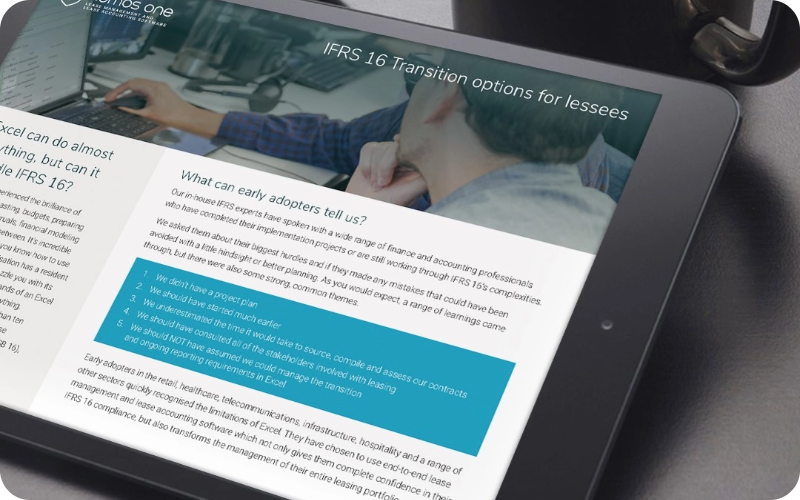IFRS 16 is complicated. When it comes time to review your balance sheet and profit and loss accounts at the end of the reporting period, it can be challenging to get an intuitive feel for how these numbers are made up. This isn’t surprising, as up to 50 different components can be included in an individual lease agreement calculation, and this is before we start accounting for any changes to this information.
That’s why we have put together the three most important reasons your team needs to include the Daily Calculation Report (DCR) as part of your Nomos One lease accounting toolkit.
Getting to grips with the detail
The DCR uses the language of accountants to establish precisely how each balance sheet and profit and loss account is calculated over every day of the lease. This spreadsheet uses formulas & cell referencing to give the entire financial model of the lease for the information currently entered through the agreement.
This allows users to get in behind the numbers and see how their balance sheet accounts are calculated at a time that otherwise would be a number on a screen.
Understanding the payment series (the bread & butter of lease accounting)
If you want to understand something, first you need to understand its underlying mechanics.
The mechanics of lease accounting all come down to the payment series. The payment series is the projected lease payments extending over the expected life of the lease, and these payments are then discounted back to reflect the lease liability.
As the payment series extends into the future, assumptions have to be made around what the rent might be when there are lease events such as CPI rent reviews, market rent reviews etc. New information is added to the model as the future becomes the present. Adjustments are made to the payment series to reflect the actual rent amounts agreed upon following the market rent review (for example).
The DCR has a tab showing all of the different payment series that have been active at various points during a lease’s life. This allows a user to quickly check changes made to the payment series and review that the current payment series makes sense.

It is an exciting time for avid football fans when the English football season begins and the player transfer window is open. During this time, players move clubs both permanently and temporarily. A temporary move is a player out on “loan”, or to us Accountant’s “a lease of an asset”.
At the date of writing this, there have been 57 loan transfers completed by Premier League clubs. When accounting for these player loans, Premier League clubs may consider an IFRS 16 application. When a player is loaned, another club is essentially paying for the right to use the asset of that players’ registration.
The accounting of a football player’s contract to a football club is done by capitalising the costs associated with registering the player (excluding wages) and then amortising that value over the contract term. The value of the players’ contracts can range for Premier League clubs and those like Manchester United, the asset value of their ‘registrations’ is more than $346m (June 2020) and even for newcomers like Watford, the asset value of their ‘players’ registrations’ is $120m (June 2020).
IFRS 16 states that a contract is, or contains, a lease if the contract conveys the right to control the use of an identified asset for a period of time in exchange for consideration. Within our context of football loans, there is a right to control the use of the player’s registration rights for a period of time through either contributing to the player’s wages or a loan fee. This suggests that IFRS 16 applies to the loaning of registration rights from one club to another.
So, when Axel Tuanzebe moves from Manchester United to Aston Villa on a season-long loan or Billy Gilmour is loaned from Chelsea to Norwich for the season, the application of IFRS 16 makes sense for this transaction. Some loan deals may fall into the short-term recognition exemptions when they are for less than 12 months but purchase options or sale and leaseback transactions do make the accounting for loan deals more complex.
IFRS 16 may also be referenced when football clubs lease stadiums or facilities or other equipment. Many premier league clubs lease the stadium from separate (but associated) companies, accounting for these leases under IFRS 16.
So, when you are next watching the exciting footballing spectacle on the football field, remember the critical lease accounting and IFRS 16 application that goes on in the background.

























